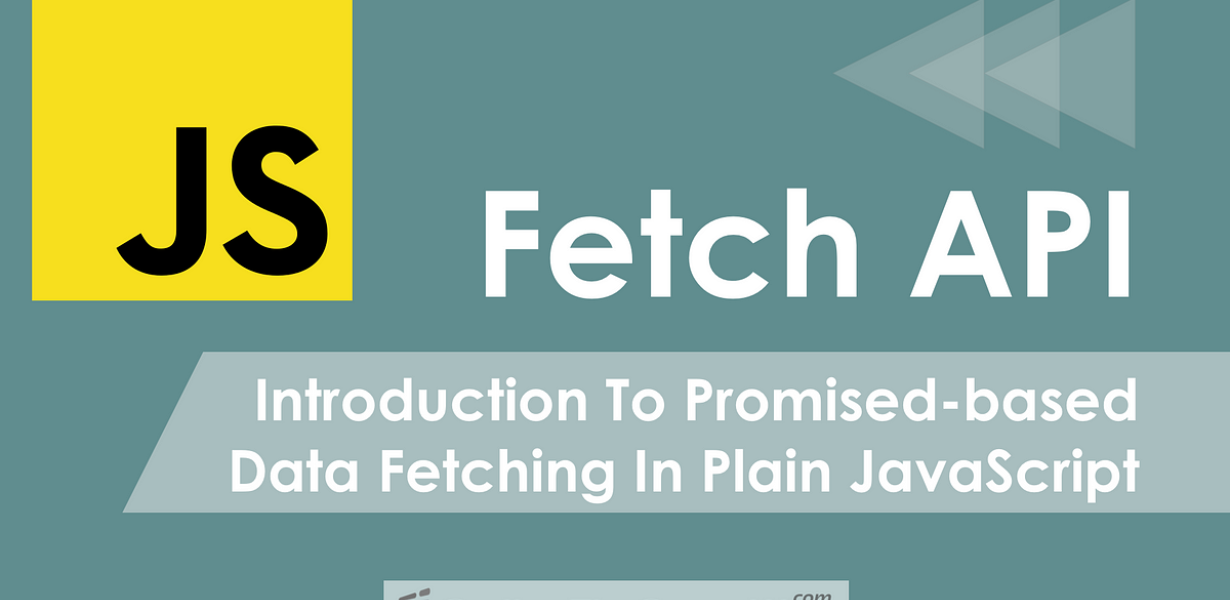
Revolutionizing Real-time Data Streaming with Fetch API’s WebSockets Integration
- Post
- August 8, 2023
- Fetch API, Web APIs, Web Technologies
- 0 Comments
In the dynamic landscape of web development, harnessing the power of real-time data streaming has become a pivotal aspect of creating engaging and responsive user experiences. The integration of Fetch API with WebSockets technology has emerged as a groundbreaking solution, propelling web applications into a new era of interactivity and performance optimization. In this comprehensive guide, we delve into the intricacies of this integration, exploring its benefits, implementation strategies, and the synergy it brings to modern web development.
Understanding the Fetch API and WebSockets
Fetch API: Transforming Data Retrieval
The Fetch API, a modern replacement for the traditional XMLHttpRequest, has redefined how data is retrieved from servers. Its simplicity and flexibility have made it a staple in modern web development. The Fetch API enables the asynchronous retrieval of resources, enabling web applications to maintain responsiveness and avoid blocking the main thread.
WebSockets: Enabling Real-time Communication
WebSockets technology, on the other hand, revolutionizes the way data is transmitted between a client and a server. Unlike traditional HTTP requests that are stateless, WebSockets establish a persistent, full-duplex connection, allowing real-time bidirectional communication. This is especially vital for applications requiring instant updates, such as messaging platforms, live feeds, and collaborative tools.
The Synergy of Fetch API and WebSockets
Enhanced User Experience
Integrating Fetch API with WebSockets enhances the user experience by minimizing latency and enabling real-time updates. As users interact with the application, Fetch API handles data retrieval asynchronously, while WebSockets seamlessly deliver live updates, creating a fluid and engaging environment.
Efficient Data Transfer
Combining Fetch API and WebSockets optimizes data transfer. Fetch API retrieves initial data, and WebSockets transmit subsequent updates, reducing redundant data transfer and conserving bandwidth.
Reduced Server Load
By using WebSockets for continuous communication, applications can reduce the load on servers compared to traditional polling techniques. This efficiency benefits both server performance and user experience.
Implementation and Integration
Initializing WebSockets
To initiate a WebSocket connection, the client sends an HTTP request to establish the connection, which then upgrades to the WebSocket protocol. JavaScript APIs such as the WebSocket object enable developers to manage the connection and handle incoming and outgoing data.
Synchronizing with Fetch API
Integrating Fetch API and WebSockets involves synchronizing data retrieval and real-time updates. The Fetch API retrieves initial data, populating the application interface. Simultaneously, the WebSocket connection is established to receive subsequent updates seamlessly.
Error Handling and Reconnection
Robust error handling and reconnection mechanisms are essential in maintaining a stable Fetch API and WebSockets integration. Implementing these safeguards ensures uninterrupted communication in the face of connection interruptions or server failures.
Best Practices for Fetch API and WebSockets Integration
Optimizing Data Transfer
Efficiently managing data transfer involves sending only necessary updates via WebSockets. This minimizes the payload, reducing latency and conserving resources.
Throttling and Debouncing
To prevent overwhelming servers and clients with excessive updates, implement throttling and debouncing mechanisms. These controls regulate the frequency of data transmission, ensuring a balanced flow of information.
Secure Connections
Prioritize security by implementing secure WebSocket connections (wss://) using SSL certificates. This safeguards data transmission and protects sensitive information from potential threats.
Final Words
In the ever-evolving landscape of web development, the integration of Fetch API with WebSockets has emerged as a pivotal advancement, revolutionizing real-time data streaming. This synergy not only empowers developers to create responsive and engaging applications but also enhances user experiences through seamless updates and reduced latency. By leveraging the strengths of Fetch API and WebSockets, modern web applications are poised to deliver a new level of interactivity and performance optimization.
Commonly Asked Questions
Q1: How does Fetch API differ from traditional XMLHttpRequest?
A1: Fetch API offers a more modern and flexible approach to data retrieval, utilizing promises for asynchronous handling and enabling a streamlined syntax compared to the more complex XMLHttpRequest.
Q2: Can Fetch API and WebSockets be used together in all web applications?
A2: Yes, Fetch API and WebSockets can be integrated into most web applications that require real-time data updates and interactive user experiences, enhancing their functionality and responsiveness.
Q3: What are the potential downsides of using WebSockets?
A3: While WebSockets offer real-time communication benefits, maintaining a persistent connection can lead to increased server resource consumption, especially in scenarios with a large number of clients.
Q4: Are there any security considerations for using WebSockets?
A4: Yes, security is essential when implementing WebSockets. Using secure connections (wss://) and proper data validation can help prevent vulnerabilities and protect sensitive information.
Q5: Are there any alternatives to WebSockets for real-time communication?
A5: Yes, alternatives like Server-Sent Events (SSE) provide a unidirectional data stream from the server to the client. However, SSE lacks the bidirectional communication capabilities that WebSockets offer.




